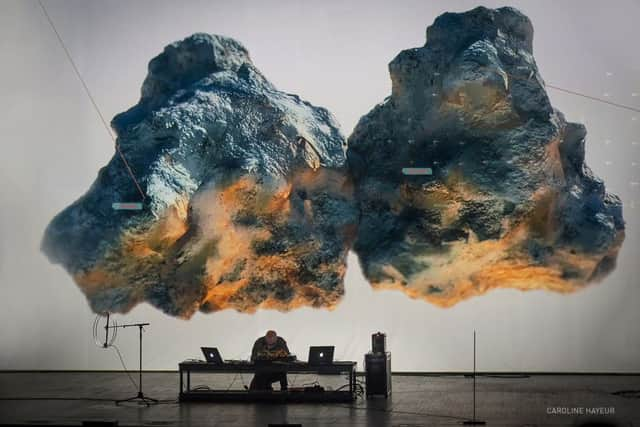Sonica 2015 reviews: Herman Kolgen | Helmholtz: Wintour’s Leap & Maxwell Quartet


In all three works presented at the Tramway as part of Sonica 2015 – Link.C, Aftershock and Seismik – his preoccupation is about making sense of the elemental forces that surround us and govern our life, but which rarely register in our consciousness.
No danger of that in Seismik, remarkable in its realtime connection to geological stress fields anywhere in the world – Alaska, Argentina and California were plucked from the ether on Friday – and Kolgen’s improvised electronic synthesis of these sonic readings into a half hour seismic symphony that combined eye-catching visuals on a monstrous screen with a grinding, ear-splitting soundtrack that, at times, felt literally as if it was rearranging the vital organs in your body.
Advertisement
Hide AdIt was, I have to say, an uncomfortable listen. But maybe its just age (being among the older members of a predominantly young audience) that led to me holding my ears for the majority of the half hour duration. Art has a right, and a need, to unsettle us, but this was physically and unrelentingly painful.
At least Link.C was governed by Philip Glass’ String Quartet No 2, brought alive by the visceral rhythmic playing of the amplified Maxwell Quartet, and visually enhanced by Kolgen’s dreamy sequence of fragmented cityscapes, graphically bound by digital cobweb-like ties.
Even the shock brutality of Aftershock – a troubling vision of a post-apocalyptic landscape – had enough light and shade to offer referential respite to its violent, unpredictable explosions, Kolgen masterminding its progress, mad scientist-style, from a centrally positioned console. Again, the physicality of the experience made it seem like the ultimate, discomforting Disneyland ride.
Helmholtz, a sound-sensitive lighting installation at Glasgow Science Centre, created by Wintour’s Leap, was a more relaxing experience. On Saturday, its forest of miniature suspended LEDs, with integrated microphones, was brought to life by a mainly minimalist programme performed by the Maxwell Quartet.
It was, effectively, a visual manifestation of the widespread diffusion of sound, where even a soft held note could be seen, literally, to penetrate every corner of the room, particularly revealing in the mystical intensity of Arvo Pärt’s undulating Summa, the ghostly flashbacks to fluid Renaissance polyphony of his Da Pacem Domine, and the other worldliness of Fratres.
The Quartet repeated its pervious night’s Philip Glass performance, this time without amplification, which unearthed some of the music’s subtler hues, but in the process lost some of its attitude and bite. The same might be said for Nico Muhly’s more extensive Diacritical Marks, an occasionally awkward piece, which nonetheless possesses genuinely engaging stretches of character and beauty.
Advertisement
Hide AdThe lights went into overdrive in Anna Meredith’s A Short Tribute to Teenage Fanclub. No bows, just ferocious pizzicati in a flurry of funky mutating scales that had the room responding like a ‘70s disco.